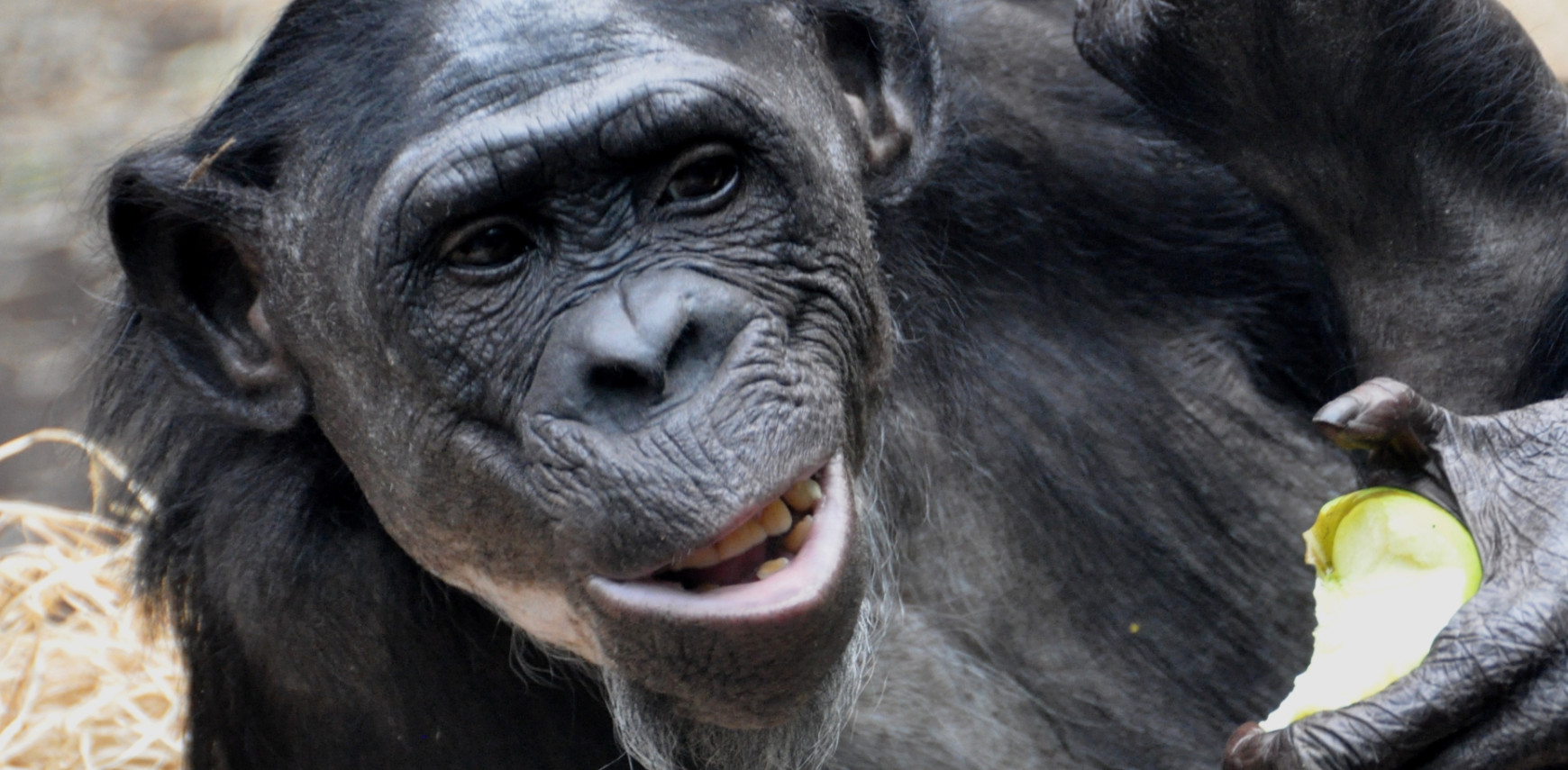Slim bonobos have slim parents
“You are what you eat!” is a common saying. Still, some people can eat whatever they want, while for others, the scale will go up after eating a single cookie. Why does this happen? A lot of it has to do with what you eat and how often you exercise, but there is more to it: you can also have a genetic predisposition to be over- or underweight. And in bonobos, new research shows this is also the case.
Bonobos can also be overweight
The diet of zoo-housed bonobos mainly consists of fruit and vegetables, a healthy and balanced diet. Nevertheless, although they are fed the same diet, bonobos living together in the same zoo can show both underweight and overweight. It is clear the diet is not the sole determinant of overweight and so the question arises whether there is, just like in humans, a genetic aspect at play in bonobos.
Getting bonobos on a scale is not that easy
In humans, measuring if someone is under- or overweight (or, more broadly, measure their relative fat mass) is easy: you let them step on a scale, measure their height, and calculate their body mass index, which is a measure for the relative fat mass of an individual.
In bonobos, this is not that easy: getting a bonobo on a scale, and then determine their body measurements, takes a lot of time and effort. Luckily, there are alternatives available. Using a visual scoring system, it is possible to judge the relative fat mass of a bonobo. By using this system, you compare the bonobo you are observing with different standardized illustrations, which represent different levels of relative fat mass (see the figure below for some examples). This way, you can score each bonobo from 1 (extremely underweight) to 10 (extremely obese). In this manner you can fast and easily estimate whether a bonobo has a normal weight, underweight, or overweight, without needing a scale.

It runs in the family
We scored all bonobos living in European zoos using this scoring system. The good news is three-quarters of the European population has a healthy amount of fat.
What is remarkable is that the relative fat mass of bonobos did not depend on their sex, age, nor their diet. However, when we included the pedigree of the bonobo population, it became clear that more closely related bonobos received similar scores.
This indicates that the relative fat mass of a bonobo is largely determined by their genetic background. Bonobos do have, similar to humans, a genetic predisposition to be fat, or to be skinny. As it turns out, just like in humans, “you are what you eat” does not seem to apply to bonobos.
The original paper is available here

